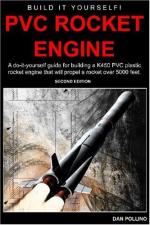|
This section contains 1,114 words (approx. 4 pages at 300 words per page) |

|
From the first rockets built by the Chinese over a millennium ago to the precision engines used by modern missiles, rocket engines all work in accordance with Isaac Newton's Third Law of Motion: For every action there is an opposite and equal reaction. In a rocket engine, hot gas expelled at high velocity generates thrust in the opposite direction. The most common means of doing so uses chemical reactions to produce the hot gas. The first rockets used solid propellants, such as black powder, but they were very inefficient. Liquid-propellant rocket engines, first developed in 1926 by Robert H. Goddard, are much more powerful and opened the way to spaceflight.
The Origins of Modern Engines
Atlas and Delta launch vehicles were originally U.S. Air Force (USAF) rockets developed in the 1950s. To power these missiles, Rocketdyne developed a family of rocket engines that burned kerosene and...
|
This section contains 1,114 words (approx. 4 pages at 300 words per page) |

|


